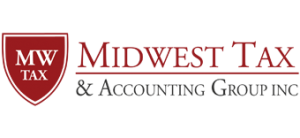April 2017
THIS MONTH: |
|
|
April 18th
Tax Return Due |
|
|
April 18th
1st Quarter 2017 estimated payments due |
|
Happy tax filing month! To help celebrate, this month’s newsletter includes a tax quiz exploring the history of taxation in the United States. Also included is a reminder to help your favorite charitable organizations retain their nonprofit status and a reminder of some popular tax breaks that are no longer available in 2017.

Tax Quiz
Here is a quiz to see how well you know your income tax history.
Q: Before the creation of the income tax, how did the U.S. government generate revenue to pay its expenses?
| a. | Taxes | – | on business income |
| b. | Tariffs | – | on foreign imports |
| c. | Plunder | – | from assets seized during war |
| d. | Inflation | – | printing money to pay its debts |
A: b. Tariffs on foreign imports. Before the 16th Amendment that made the collection of income taxes official, the U.S. federal government was mainly funded through taxes on foreign imports, called tariffs.
Q: How much of the federal government’s current revenue comes from individual income taxes?
| a. | Less than 10 percent |
| b. | About half |
| c. | About 90 percent |
| d. | Nearly all of it |
A: b. About half. In the 2015 tax year, 47 percent of federal government revenue came from individual income taxes. Payroll taxes paid by employers and employees for Medicare and Social Security made up 33 percent and corporate income taxes made up 11 percent. The remainder was miscellaneous other taxes including excise, estate, and gift taxes.
Q: 1987 marked the first year the IRS required taxpayers to report their dependents’ Social Security numbers on their tax returns. The result was many children magically “disappeared” compared with those claimed in 1986. How many dependents evaporated into thin air after this law change?
| a. | more than 1 million | b. | 1 to 2 million | c. | 3 to 4 million | d. | 5 to 6 million | e. | more than 7 million |
A: e. More than 7 million. These disappearing dependents put an exclamation point on an epidemic of tax cheating.
Q: Many U.S. corporations consider moving their headquarters overseas to save money on taxes. What is the highest marginal tax rate charged to corporations in the United States?
| a. | 12.5% | b. | 20.6% | c. | 30% | d. | 38.9% | e. | 55% |
A: d. The 38.9% U.S. marginal corporate tax rate is the third highest in the world according to the Tax Foundation. The difference between U.S. tax rates and rates in other countries (e.g. Ireland at 12.5%) puts corporations in a no-win position. Either face shareholder wrath and potential lawsuits for overpaying income tax, or feel the wrath of consumers and political pundits for moving the corporation overseas to save money.
Bonus: Which two places have a higher corporate tax rate than the United States?
A: Puerto Rico (39%) and Saudi Arabia (55%)
Three Popular Tax Breaks are Gone
As you make plans for the 2017 tax year, take note that three popular tax breaks expired last year and won’t be available unless Congress acts to extend them.

- Tuition and fees deduction. You used to be able to deduct as much as $4,000 in college tuition and fees as an adjustment to taxable income. This provision was popular because it provided an alternative to other credits and did not require you to itemize deductions to receive the tax benefit. While this tax benefit is currently expired, several tax breaks geared toward students still exist:
| student loan interest expense deductions | |
| • | student education savings plans (529 plans) |
| • | education credits such as the American opportunity credit and the lifetime learning credit |
- Mortgage insurance premiums. The ability to deduct the cost of mortgage insurance premiums as an itemized deduction expired last year. This expired benefit used to phase out for taxpayers with more than $100,000 in adjusted gross income. Mortgage insurance is typically required of homeowners with a less than 20 percent down payment on their home purchase.
- Lower senior threshold for medical expense deductions. The threshold for deducting itemized medical expenses raises to 10 percent of adjusted gross income for all taxpayers beginning in 2017. Prior to this, those age 65 or older had a lower 7.5 percent threshold. Only unreimbursed, qualified medical expenses in excess of 10 percent of your adjusted gross income can now be taken as an itemized deduction. For example, if a 70 year old taxpayer has $50,000 in adjusted gross income, he could have deducted his medical expenses that exceeded $3,750 as an itemized deduction. This year that number rises to $5,000 with the same income, putting it that much further out of reach for seniors.
Remember to plan for these changes. But also keep an eye on future action from Congress that could bring these dead tax deductions back to life.
Nonprofit Annual Filing Due
Annual reporting is required for all organizations that wish to keep their nonprofit status intact. The due date for this filing is May 15, 2017 for calendar-year organizations. Here’s how you can help ensure your favorite charities stay compliant.

- Check online. The IRS has a master list of charitable organizations recognized as nonprofits in good standing. Here is a link: IRS Exempt Organizations Select Check
- Remind the organization. Many small nonprofits like youth sporting groups and local school booster clubs often forget about this reporting because officers are constantly rotating in and out of the organization.
- Encourage them to make a simple filing. If the charitable organization has less than $50,000 in gross receipts, they can comply by sending in an 990-N e-postcard. Larger organizations must fill out Form 990.
- Avoid losing status. Failure to file could cause your favorite charity to lose their nonprofit status. This can have a cascading effect on all those donating who wish to deduct their donation on their tax returns.







